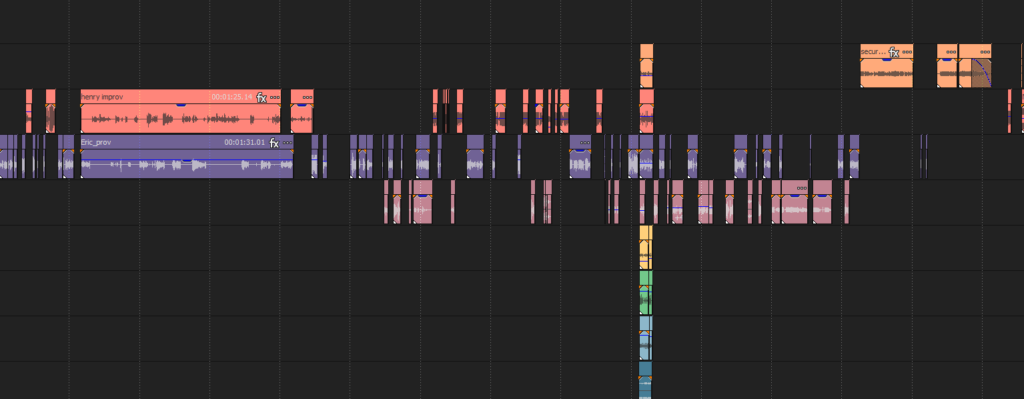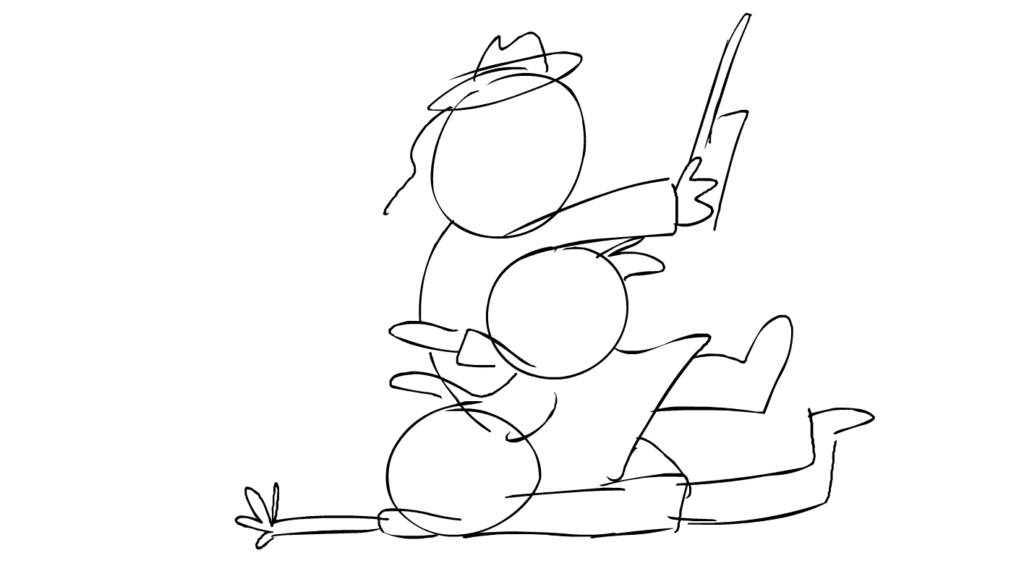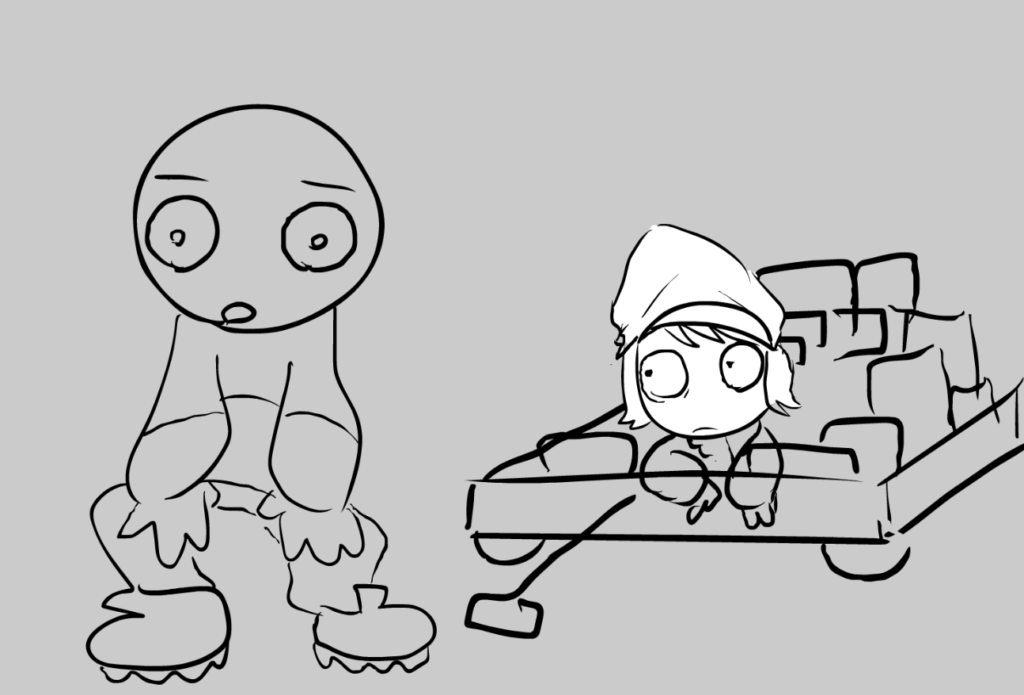BLOG

After voice acting and putting together the audio, it’s time for me (and whoever else is boarding) to hunker down and start boarding in Flash! (This time it’s just me.)
Here’s the audio track for this episode, by the way, if that interests you:

I’ll split this up into a whole bunch of scenes, ranging anywhere from twenty seconds to almost two minutes. Where I split them can depend on the setting and story placement, but sometimes a split between two scenes is just because if they were together as one it would be too long for one person to animate.
After this, if I’m not alone boarding the episode, I’ll split up scenes between me, Justin, and Amber. In this case, however, I just boarded them all.
Boarding this episode took about two weeks give or take. Compare that to Make Love… And War!‘s boards, an episode that is almost the same length, which took almost 6 months because I was inexperienced and lazier (and sixteen years old).
When me and the others board, we just put the audio into Flash and do the animatic straight-ahead. I think this is probably how a lot of people do it. It’s a lot more convenient than if we had to do it on paper or in other art software, since it’s timed to the audio and we can hear the audio as we do it.
When I boarded episode one, for some reason, I thought boarding it the way I have been for the past 5 years was too complicated or something, so I drew each frame of the animatic and exported them as PNGs, then timed it in Vegas. I don’t know why I did that.

I pretty much immediately stopped doing it this way.
When I board, depending on what’s happening in the scene (and my overall motivation) I will either do almost fully-refined layouts or the worst, roughest drawings you can imagine.

Later, in the same scene…

I tend to do the latter if I know for a fact I’m animating that scene, since I do a lot of what would be considered “layouts” when I’m animating.
Sometimes I’ll do almost fully-animated parts if I know exactly how I want it to look and move. There’s one example of this I REALLY want to show you but I’m going to save for later since it’s so funny and I want it to be a surprise.
Scene four of Eric and Henry Make A Snuff Film is kind of an example of this, where I did really rough versions of the characters’ run cycles (at least for the first two shots). This was also the first scene I boarded for episode two.
One thing I love in older cartoons is when you can tell who boarded what. For example, in SpongeBob, you can instantly tell an Aaron Springer drawing from a C.H. Greenblatt drawing:


Aaron’s style even changed as the series progressed, becoming more simplified and geometric.

You can see this in Ren and Stimpy, Flapjack, and various other cartoons. This is something we really strive for with ERIC!
Me, Justin, and Amber (who hasn’t boarded anything yet but will soon) all have very distinct styles, and we try to make that show. If you go through The Sweet Truth, with a keen eye, you can (hopefully) tell who boarded what.




This doesn’t really apply to this episode, but it’s something I wanted to mention because it’s important to us. We also like to animate each other’s storyboards, so when I animate Justin’s boards I try to keep the important aspects while cleaning up anything that needs to be more refined.
Honestly, boarding is the hardest part of the entire process. It’s the most important part and the part that takes the most creative energy — You’re visualizing the entire episode’s events! While it’s the hardest, it’s usually the most fun. Once all the boards are done, we step into the most tedious of steps, actually animating the damned thing. So, once that’s all done… I’ll see you in part three!
COMMENTS
2 responses to “MAKING AN ERIC: Storyboarding”







I forgot that you did that method of boarding for the first one.
I can’t blame you for trying to storyboard the first episode that way because for some reason a lot of teenagers still try to use traditional storyboard sheets for their Flash cartoons